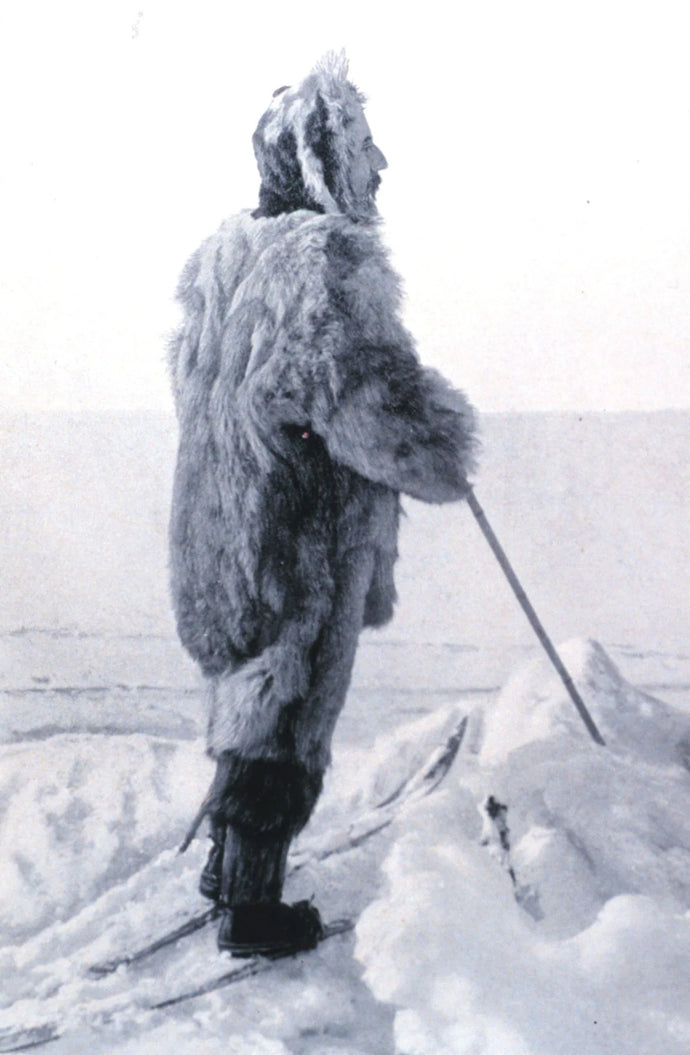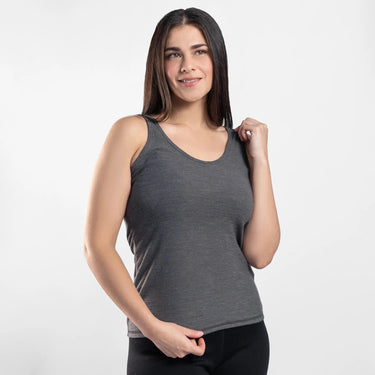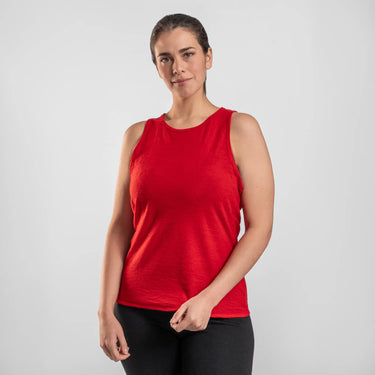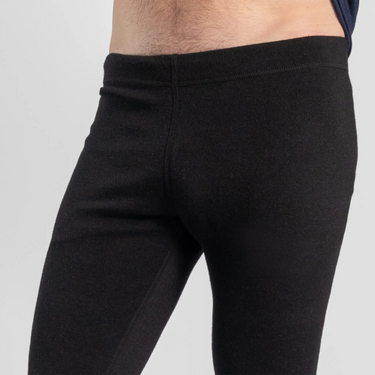Published December 13, 2021
Nowadays you barely have to think twice before pulling on a synthetic jacket and heading out into cold weather. But what outdoor clothes did people wear before synthetic fibers were invented? Some of the earliest Antarctic explorers, like Roald Amundsen, braved freezing conditions without the advantage of modern extreme cold weather clothing. So how did they do it?
What materials did they use?
It came down to lots and lots of layers. At the time of Antarctic exploration, humans hadn’t invented synthetic materials, nylon was only first made in 1935. Their base layers were often made of wool, typically long john style underwear. This provided a good base layer of insulation, as wool retains its insulative value even when wet.

Over their wool base layers Amundsen and his team would layer cotton shirts and wool sweaters with turtlenecks to help them beat the cold. They also had the option of wearing seal skin pants and anoraks.
Over top of these layers would sit a reindeer skin anorak or wolf skin anorak, providing a very thick warm layer to prevent wind chill. Because all precipitation in Antarctica falls as snow, they didn’t have to worry too much about waterproof layers.
Protecting their extremities was also very important. On their feet they wore reindeer skin boots stuffed with grass, called Sennegrass, over the top of multiple layers of wool socks. This technique is used by people from Lapland in very cold environments which is why the Antarctic explorers copied their idea.
Hands were protected with a pair of wool gloves and a larger pair of reindeer mittens. To protect their heads Amundsen’s team wore wool balaclavas, hats, and scarves.
At the same time as Amundsen was racing for the South Pole, a British team lead by Captain Scott was also making an attempt to reach the pole. They opted for less animal fur clothing, instead used layers of wool and Burberry windproof fabric to keep out the cold. Amundsen won the race to the pole, arriving on the 14th of December 1911.
Why did we switch to synthetics?
Roald Amundsen and his Antarctic exploration team were racing to the south pole in the early 1900’s, a good 30 years before the creation of the first synthetic fabrics. Leaving them little choice as to what they could wear. However, modern winter enthusiasts almost always opt for synthetic materials over natural ones, why is that?
It’s due to a number of things. Primarily their insulative value. A synthetic jacket stuffed with down traps a great insulating layer of air around your body, which is going to keep you toasty warm.
Modern mountain climbers use full body suits made from synthetic materials. These suits can keep you warm in temperatures as low as -50⁰C, which would have been of great use to Amundsen and Scott. On top of their impressive insulative value, it’s also about weight. Modern materials like nylon and Gore-Tex are incredibly lightweight and strong, making them much more useful in tough environments.
Cost also had a lot to do with the shift. It is much easier to make massive amounts of petrochemical based fabrics like nylon and polyester, than it is for rear alpacas or sheep for their wool. However, the production methods used to make these synthetic fabrics have high environmental costs. Which is something worth considering now more than ever.
Synthetics are also very good at what they do. If you have ever been caught out in a rainstorm before, you probably have had silently praised your Gore-Tex layers for keeping you completely dry.

Are synthetics better than natural materials?
Well, not exactly. They each have their own advantages and we recommend combining them to get the most out of your outdoor experience. For example, it doesn’t make sense to use anything other than a synthetic outer jacket. Being completely wind and rain proof is a massive advantage for any outdoor enthusiast.
However, it is more convenient to wear natural fibers next to skin. If you have tried wearing alpaca wool as mid or base layers, you probably won’t wear synthetics next to skin ever again. The combination of breathability, moisture-wicking and warmth makes them hard to beat. Plus, they are sustainably made so you don’t have to worry about the environmental impacts of your choices.
Likewise for your pants, obviously a Gore-Tex outer layer is going to be a winner. For your base layer a great merino wool garment is going to serve you really well.
While synthetic materials do bring a lot to the table, there is definitely a seat at it for natural fibers.
Latest News

Alpaca Wool for Extreme Weather | Sustainable High Performance Gear
Discover why alpaca wool outperforms Merino in insulation, UV protection, and sustainability. Nature’s ultimate fiber for extreme weather and outdoor wear.

The Colors You’re Wearing: Natural Dyes and GOTS-Certified Colors
Learn about natural dyesfrom the Andes and low impact dyes that bring our alpaca wool to life—biodegradable, skin-safe, and GOTS-certified.

The Art of Layering Clothes: How to Layer for the Outdoors
Learn how to layer clothes for outdoor activities with base, mid and shell layers. Stay warm, dry, and comfortable in any environment.


























